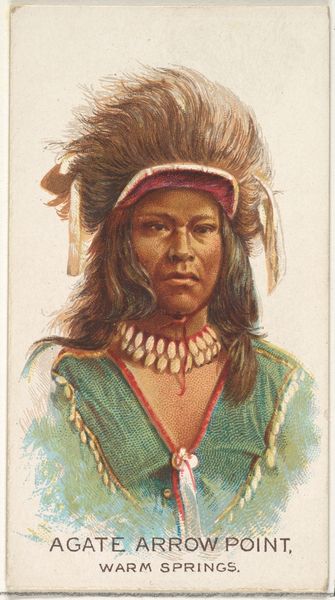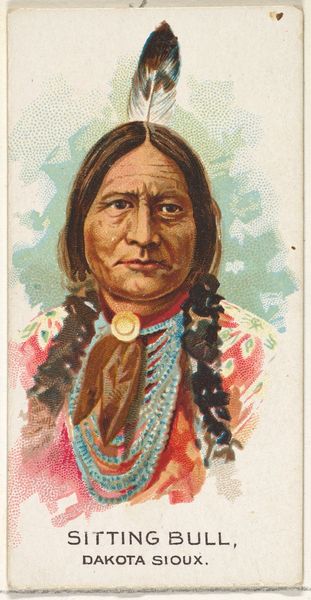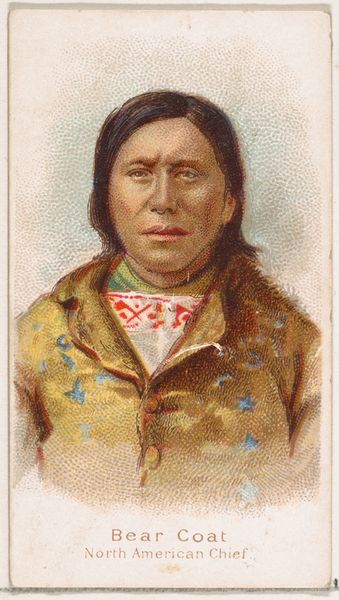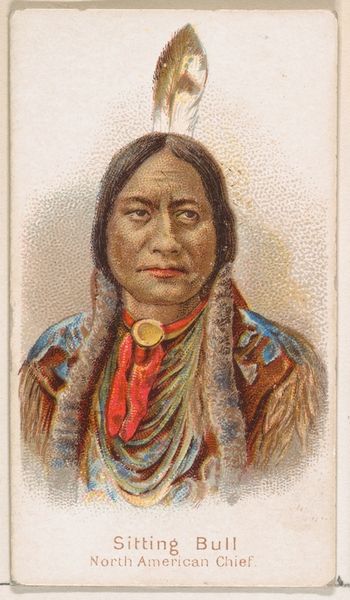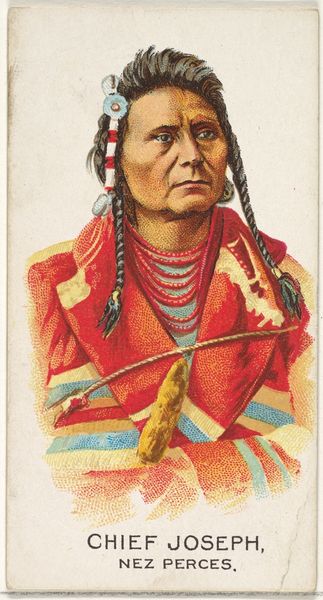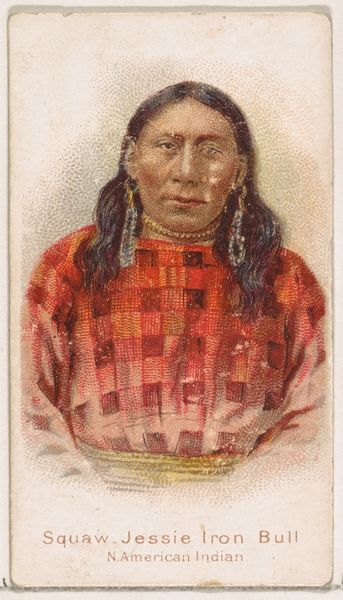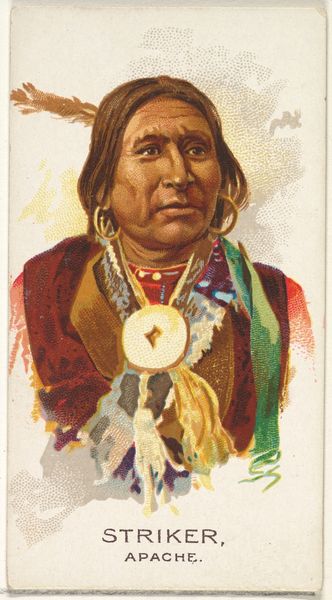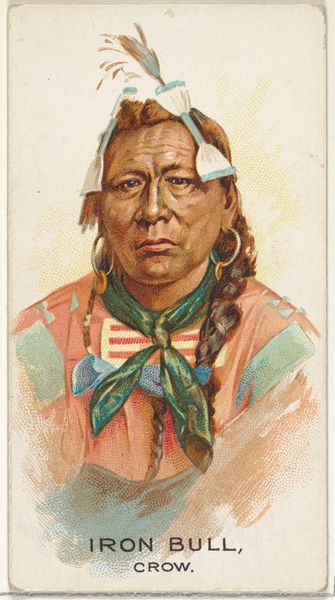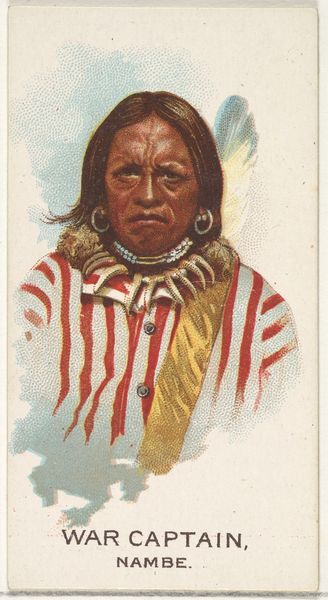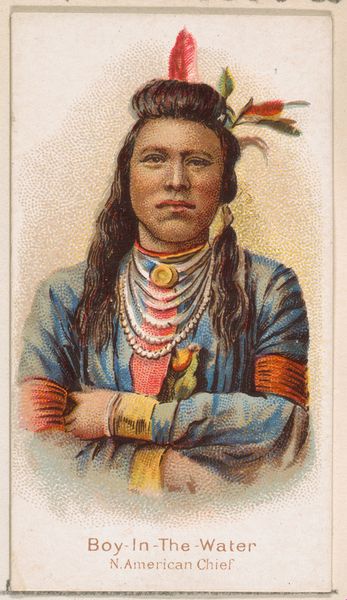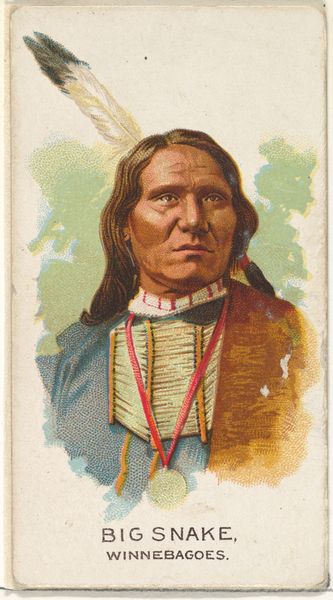
Copyright: Peter Blake,Fair Use
Editor: This is "Red Power" by Peter Blake, a screenprint from 1972. The sheer scale of the face is arresting, but the orange background throws me off – it almost feels like it's trying to neutralize something very serious. What do you see in this work? Curator: I see a layering of cultural memory, intentionally disrupted by the aesthetics of Pop Art. Consider the symbolism of the color red: for some Indigenous peoples, it represents life, blood, and courage, but the title itself, "Red Power," consciously evokes a movement, a struggle. The face itself feels deliberately aged, etched with history. Editor: So, the image is referencing specific events? Curator: More than that. It invokes a historical consciousness. Note the direct gaze – confronting, unbroken. That gaze defies centuries of misrepresentation and erasure. The orange backdrop you mentioned? I wonder if it serves to flatten the image, acknowledging Pop Art's tendency to reduce complex realities to simplified, consumable forms. Is Blake critiquing his own medium, perhaps? Editor: Interesting… so even the "Red Power" slogan itself, almost like a logo, plays into this flattening? Curator: Precisely! Words become images; struggle becomes a brand. But the power resides in the persistence of that gaze, carrying generations of stories within it. Consider, what stories do *you* see in that gaze? Editor: I didn’t initially notice that tension between Pop Art and historical depth. It seems there’s more going on than I first thought! Curator: Indeed. The image lingers precisely because it refuses to be simply consumed, inviting us to unpack the complex symbology and challenge our own understandings.
Comments
No comments
Be the first to comment and join the conversation on the ultimate creative platform.

